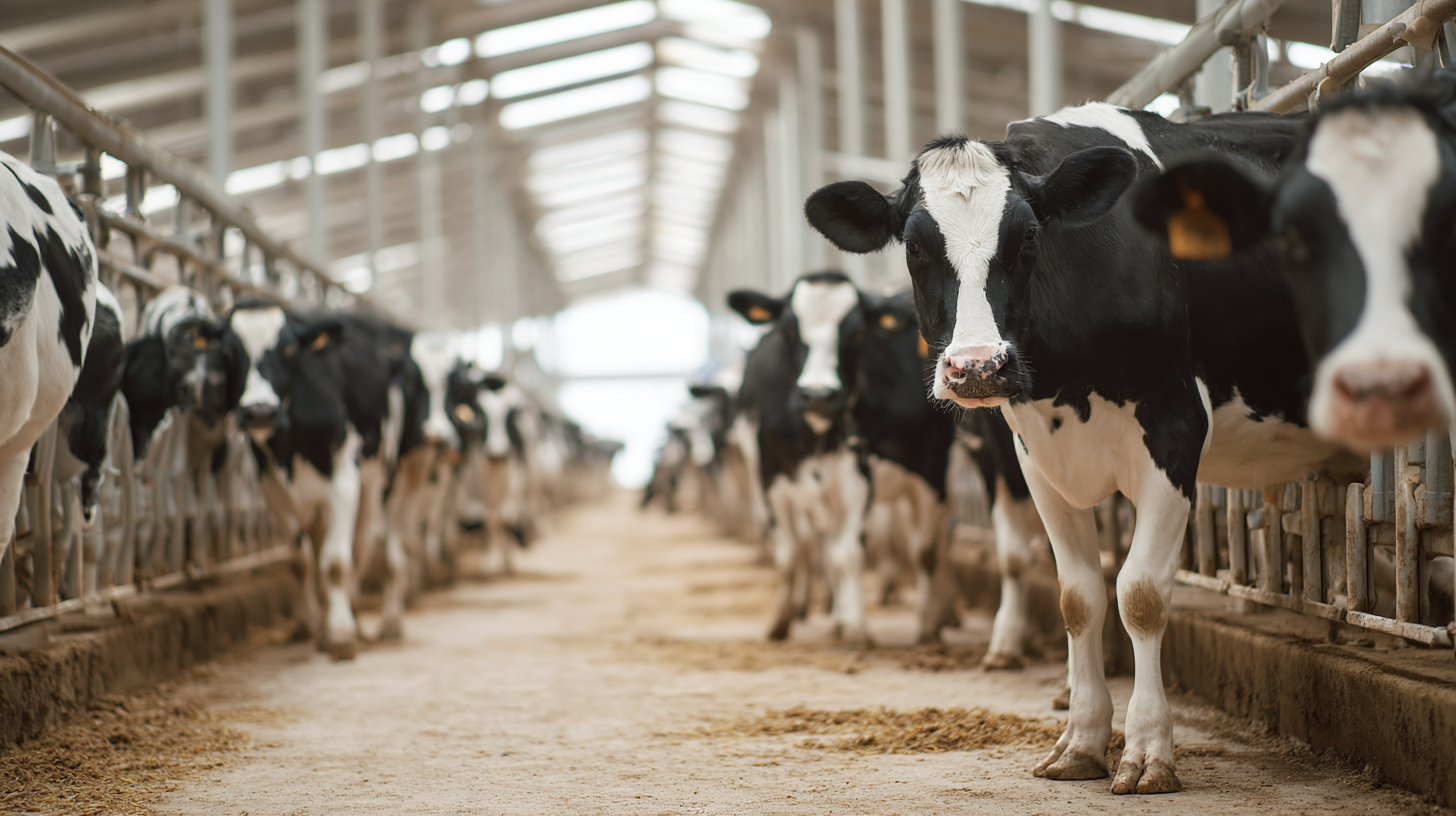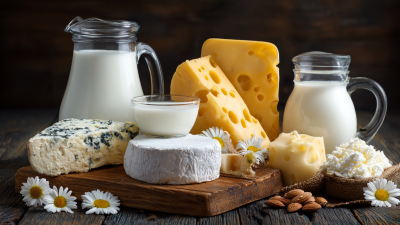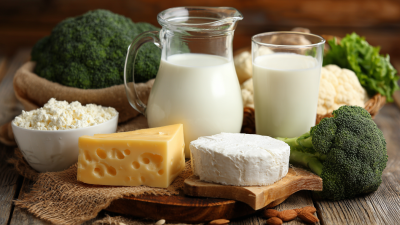
Essential Guide to Choosing Innovative Dairy Milking Equipment for Modern Farms
In the rapidly evolving dairy industry, selecting the right dairy milking equipment is crucial for maximizing efficiency and productivity on modern farms. According to a report by MarketsandMarkets, the global dairy equipment market is projected to reach USD 18.9 billion by 2025, driven by increasing demand for dairy products and advancements in milking technologies. Innovative milking solutions, including automated systems and precision management tools, are becoming essential as farmers seek to enhance milk quality and streamline operations. Furthermore, a study by the Food and Agriculture Organization (FAO) indicates that farms utilizing modern milking equipment can achieve up to a 20% increase in milk yield while reducing labor costs. Consequently, understanding the key features and benefits of contemporary dairy milking equipment is vital for farmers aiming to remain competitive and sustainable in a challenging market landscape.

Understanding the Latest Trends in Dairy Milking Technology for Enhanced Efficiency
In recent years, the dairy farming industry has witnessed a significant transformation driven by advancements in milking technology. According to a report by the International Dairy Federation, more than 60% of dairy farms globally are adopting automated milking systems. These innovations are not only enhancing operational efficiency but also improving the welfare of dairy cows. By utilizing robotics and advanced milking equipment, farms can achieve a milking frequency that accommodates the individual needs of each cow, resulting in increased milk yield and better quality.

Moreover, modern milking equipment is increasingly designed with data analytics capabilities, allowing farmers to monitor herd health in real time. A 2023 study published by Agri-Tech East revealed that farms utilizing data-driven insights have seen a 15% reduction in veterinary costs over three years. Advanced sensors and monitoring systems ensure prompt detection of health issues, leading to timely interventions. As dairy farms continue to embrace these innovative technologies, the focus remains on sustainable practices that not only boost productivity but also contribute to the overall well-being of the livestock and the environment.
Key Factors to Consider When Selecting Milking Equipment for Optimal Herd Health
When selecting milking equipment for modern dairy farms, prioritizing herd health is paramount. Equipment should be designed with animal comfort in mind, ensuring that the milking process is as stress-free as possible. Features such as adjustable milking clusters, gentle suction mechanisms, and quiet operation can significantly reduce anxiety in cows during milking. Additionally, considering the ergonomics of the equipment for both the animals and the operators can enhance workflow efficiency and minimize the risk of injuries.
Another key factor to consider is the hygiene and maintenance aspects of the milking equipment. Cleanliness is crucial in preventing mastitis and other health issues in dairy cattle. Look for systems that are easy to clean and that support routine maintenance checks. Advanced technologies, such as automatic cleaning cycles and real-time health monitoring systems, can help maintain optimal milk quality while ensuring the health of the herd. Overall, selecting the right milking equipment entails a thoughtful assessment of both the animals' needs and the operational efficiencies that support their well-being.
Innovative Dairy Milking Equipment Selection Factors
This chart illustrates the important factors considered when selecting innovative dairy milking equipment for modern farms. The levels of consideration range from durability to technology integration, highlighting the priorities for optimal herd health.
Comparing Traditional vs. Automated Milking Systems: Pros, Cons, and Performance Metrics
When comparing traditional and automated milking systems, several factors come into play, including efficiency, cost, and animal welfare. Traditional milking methods, such as hand milking and parlor systems, offer advantages in terms of control and direct interaction with the animals. Farmers can closely monitor the health and behavior of each cow, ensuring that any issues are promptly addressed. However, these methods often require more labor and time, making them less feasible for larger farms with extensive herds.

On the other hand, automated milking systems present significant benefits in efficiency and labor reduction. These systems use advanced technology to allow cows to self-milk at their convenience, leading to a more stress-free environment. Moreover, automation can enhance data collection on milk yield and cow health, further improving farm management practices. While the initial investment in automated systems can be high, the long-term savings in labor and increased milk production often justify the costs. However, farmers must consider the potential downsides, such as the need for technical maintenance and the risk of reduced human-animal interaction, which can impact animal well-being.
Impact of Innovative Milking Solutions on Milk Quality and Farm Productivity
The impact of innovative milking solutions on milk quality and farm productivity is significant in today’s dairy industry. According to the International Dairy Federation, the adoption of advanced milking technologies has led to an approximate 20% increase in milk yield per cow over the past decade. Enhanced milking systems, such as automatic milking robots, not only optimize the milking process but also reduce stress for both cows and workers, resulting in higher quality milk due to improved animal welfare.
Moreover, innovative equipment, including precision milking machines, allows for real-time monitoring of milk quality parameters such as somatic cell count and bacterial load. A study by the Dairy Research Institute reveals that implementing these technologies can decrease spoilage rates by up to 15%, ensuring that the milk produced is fresh and safe for consumers. Additionally, modern milking rigs can improve overall farm productivity by streamlining operational efficiency, allowing dairy farmers to focus on breeding and herd health management, thus further boosting profitability and sustainability in the industry.
Essential Guide to Choosing Innovative Dairy Milking Equipment for Modern Farms - Impact of Innovative Milking Solutions on Milk Quality and Farm Productivity
| Equipment Type | Technological Innovations | Impact on Milk Quality | Impact on Productivity | Average Cost ($) |
|---|---|---|---|---|
| Automatic Milking Systems | Robotic arms, Sensors, Automated cleaning | Higher hygiene, consistent milk temperature | Increased milking speed, reduced labor | 150,000 |
| Milk Cooling Tanks | Insulated tanks, Efficient refrigeration | Prevention of bacterial growth, Better taste | Longer storage time, less spoilage | 10,000 |
| Milking Machines | Vacuum pumps, Pulsators, Digital controls | Less stress on cows, improved udder health | Higher yield per cow, reduced milking time | 5,000 |
| Milk Quality Testing Equipment | Infrared analyzers, Automated sampling | Accurate nutrient profiling, early problem detection | Optimized feeding strategies, fewer health issues | 20,000 |
Budgeting for Milking Equipment: Cost-Effectiveness and Long-Term Investment Returns
When considering milking equipment for modern dairy farms, budgeting plays a crucial role in ensuring cost-effectiveness and maximizing long-term investment returns. It's essential to assess both the initial costs and the ongoing expenses associated with milking systems. Cheaper equipment might seem attractive upfront, but it often incurs higher maintenance costs and lower efficiency, ultimately impacting profitability. Investing in innovative, durable milking machines can yield significant savings through reduced labor costs, improved milk yield, and lower energy consumption over time.
Moreover, evaluating the total cost of ownership is vital. This includes not only the purchase price but also training, operational costs, and potential upgrades in technology. Choosing equipment that offers scalability and adaptability will allow farms to keep pace with advancing milking technologies and changing market demands. By carefully analyzing these factors, dairy farmers can make informed decisions that will bolster their operational efficiency and ensure sustainable growth for years to come.
Related Posts
-

Essential Dairy Barn Equipment Upgrades for Modern Farming Efficiency
-

Exploring the Health Benefits of Consuming Diverse Milk Products in Your Daily Diet
-

Exploring Sustainable Products of Dairy Farming and Their Impact on Global Nutrition
-

The Surprising Health Benefits of Incorporating Dairy Products into Your Daily Diet
-

Unlocking the Secrets of Dairy: How Milk Transforms Nutrition and Wellness
-

Discover the Best Dairy Products Online for a Healthier Lifestyle
